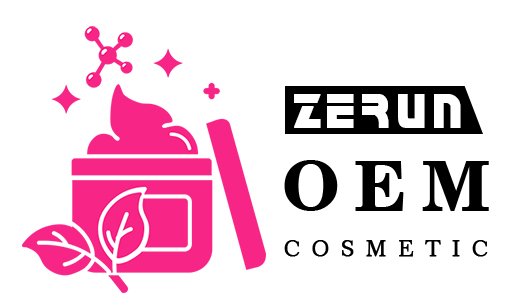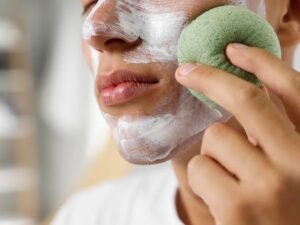In today’s fast-paced world, achieving healthy, vibrant skin can seem like an unattainable luxury. Yet, nature provides us with simple, effective solutions to rejuvenate and refresh our complexion.
Natural skin exfoliation involves gently removing dead cells using organic, minimally processed ingredients to promote cell renewal and reveal a radiant complexion. This expert guide covers methods, ingredient benefits, and tailored routines to enhance skin health. Our practical advice empowers you with simple, effective solutions for revitalized skin and lasting beauty and overall enhanced confidence.
What Is Natural Skin Exfoliation?

Natural skin exfoliation uses organic, gentle techniques to remove the outer layer of dead skin cells, stimulating cell turnover and revealing a brighter, healthier complexion.
Process:
At its core, natural skin exfoliation is a process designed to gently eliminate the buildup of dead cells on the skin’s surface, particularly in the stratum corneum—the outermost layer of the epidermis. Unlike some harsh chemical peels or abrasive scrubs, natural exfoliation relies on ingredients derived from nature that not only cleanse but also nourish and soothe the skin. These methods include both physical exfoliation (using particulate matter like sugar, oatmeal, or coffee grounds) and biochemical exfoliation (using enzymes or naturally occurring acids from fruits such as papaya and pineapple).
Why It’s Essential:
Exfoliating naturally offers multiple benefits:
- Enhanced Cell Renewal: By removing the layer of dead cells, natural exfoliation stimulates the skin’s natural regeneration process. This improved cell turnover leads to a fresher, more youthful appearance over time.
- Improved Absorption: Once the dead cells are cleared away, the skin is better able to absorb moisturizers, serums, and other skin care products. This increased efficacy can boost overall skin health.
- Pore Clarity and Radiance: Regularly exfoliated skin is less prone to clogged pores and breakouts. The process also evens out skin tone and texture, helping to diminish the appearance of fine lines and pigmentation irregularities.
- Reduced Irritation: Natural ingredients, in contrast to many synthetic exfoliants, tend to be less irritating and more suitable for sensitive skin. They maintain the skin’s moisture balance while still effectively sloughing away old cells.
Mechanisms Behind Natural Exfoliation:
- Physical (Mechanical) Exfoliation: Gently buffs away dead cells with a textured substance. Ingredients like finely ground sugar or oatmeal are ideal as they provide a moderate abrasive effect without tearing the skin.
- Biochemical (Enzymatic) Exfoliation: Utilizes enzymes and organic acids that chemically dissolve the proteins binding dead skin cells together. This method works through a process that mimics the skin’s natural shedding, creating a smoother surface without the need for physical agitation.
Comparative Insights:
A key advantage of natural exfoliation over harsher methods is its balanced approach. For example, while chemical exfoliants can cause temporary redness or irritation due to their potency, natural methods tend to provide a dual benefit—they gently remove dead cells while also delivering nutrients that support skin repair and hydration. Many dermatologists now advocate for natural exfoliation strategies, particularly for individuals with sensitive or aging skin, because they help maintain the integrity of the skin barrier.
By incorporating natural exfoliation into your regular skincare routine, you support your skin’s health and create a resilient foundation for subsequent treatments and moisturizers. This balanced approach not only makes the skin look revitalized but also promotes long-term wellness.
How Does Natural Exfoliation Work on Different Skin Types?
Natural exfoliation works by employing either mechanical or biochemical techniques to gently remove dead cells without disrupting the skin’s balance, adapting methods based on whether you have oily, dry, sensitive, or combination skin.
The Mechanisms Behind Exfoliation
The process involves two primary mechanisms:
- Mechanical Exfoliation: This uses physical forces—like scrubbing with a textured ingredient—to manually remove dead skin.
- Biochemical Exfoliation: Utilizes natural enzymes or acids (e.g., from papaya or pineapple) to break down the glue-like bonds between cells.
Both methods are designed to encourage cell turnover without over-stressing the skin’s barrier, providing a natural boost to its regenerative process.
Tailoring Techniques for Various Skin Types
- Oily Skin: Often benefits from a slightly stronger mechanical scrub (such as coffee grounds) to clear pores and reduce excess sebum.
- Dry Skin: Prefers gentle, moisturizing exfoliants like sugar mixed with hydrating oils, which help minimize the risk of irritation.
- Sensitive Skin: Requires extra caution; lightweight ingredients like finely ground oatmeal offer soothing benefits with minimal friction.
- Combination Skin: May alternate between techniques—using a gentle biochemical approach on dryer areas and a moderate mechanical method where oiliness is predominant.
Expert Recommendations for Customizing Your Routine
Experts suggest starting with a patch test, adjusting the frequency (typically 1–2 times per week), and gradually increasing exposure as your skin builds tolerance. Personalizing your approach ensures that exfoliation supports rather than disrupts your skin’s natural equilibrium.
Scientific Insights: pH Balance and Enzymatic Action
Research shows that maintaining a balanced pH is critical during exfoliation. Enzyme-based exfoliants work optimally at a slightly acidic pH, which complements the skin’s natural barrier. This balance not only aids in effective exfoliation but also helps prevent post-treatment irritation or dryness.
Which Natural Ingredients Are Most Effective for Exfoliation?

Key natural exfoliants include sugar, oatmeal, coffee grounds, fruit enzymes, and sea salt; each ingredient offers unique benefits that encourage skin renewal, reduce inflammation, and impart a subtle, natural glow.
Ingredient Breakdown
Choosing the right natural exfoliant hinges on understanding each ingredient’s properties. Here are some of the most effective components found in natural exfoliation:
- Sugar: Provides gentle abrasion while delivering moisture due to its hydrating properties.
- Oatmeal: Known for its soothing, anti-inflammatory benefits, making it ideal for sensitive skin.
- Coffee Grounds: Their texture helps stimulate circulation and reduce puffiness.
- Fruit Enzymes: Derived from fruits like papaya and pineapple, these enzymes effectively break down dead skin cells without harsh friction.
- Sea Salt: Offers mineral benefits and a deeper clean for those with oilier skin, though it must be used cautiously on sensitive areas.
Comparison Table of Natural Exfoliants
| Ingredient | Key Benefits | Suitable For Skin Types | Notes |
|---|---|---|---|
| Sugar | Gentle abrasion, hydration | All, especially dry or sensitive | Easily dissolves in water |
| Oatmeal | Soothes irritation, mild cleansing | Sensitive, dry | Ideal for calming and softening skin |
| Coffee Grounds | Enhances circulation, reduces puffiness | Normal, oily | Rich in antioxidants |
| Fruit Enzymes | Enzymatic exfoliation, texture improvement | All, particularly mature skin | Derived from papaya and pineapple |
| Sea Salt | Deep cleansing, mineral boost | Oily, combination | Use sparingly to avoid over-drying |
This table can be copied directly and utilized as a quick reference when deciding which natural exfoliant to incorporate into your skincare regimen.
DIY Exfoliation Recipes
Experimenting with homemade recipes can yield excellent results. For example:
- Simple Sugar Scrub: Mix 2 tablespoons of organic sugar with 1 tablespoon of coconut oil and a few drops of essential oil for fragrance.
- Oatmeal Soother: Blend finely ground oatmeal with honey and a bit of water for a paste that can be applied and rinsed off for immediate relief.
Safety Tips for Combining Ingredients
While mixing ingredients can enhance benefits, it’s crucial to understand your skin’s tolerance. Combine one active ingredient at a time and observe the reaction. Avoid mixing ingredients with vastly different pH levels, as this may reduce effectiveness or cause irritation.
Do Natural Exfoliation Techniques Deliver Noticeable Results?
Yes, natural exfoliation techniques can yield measurable improvements in skin texture, clarity, and radiance by increasing cell turnover and enhancing the effectiveness of subsequent skincare products, provided they are used consistently and correctly.
Natural exfoliation is a controlled process that removes dead skin cells from the surface layer of the skin through physical or enzymatic means. Unlike harsh synthetic treatments, natural exfoliation employs ingredients such as sugar, oatmeal, or fruit enzymes that gently slough away dead cells and stimulate natural cell renewal. This method not only smoothens the skin’s surface but also encourages a more uniform complexion over time. The visible benefits arise from the rejuvenation of the skin’s surface, which allows newer, healthier cells to be exposed, thereby enhancing overall radiance.
Mechanisms and Scientific Rationale
1. Cellular Renewal and Turnover
The skin naturally undergoes a cycle of cell death and renewal. In healthy skin, dead cells are continuously shed, but various factors—aging, environmental stressors, and pollutants—can slow this process down. Natural exfoliation helps accelerate cell turnover by carefully removing the build-up of dead cells. Scientific research suggests that a controlled rate of exfoliation can promote up to a 20–30% increase in the rate of epidermal cell renewal in some cases. This results in a brighter complexion, improved texture, and better performance of moisturizers and serums due to enhanced absorption.
2. Dual Approach: Mechanical and Biochemical
There are two primary pathways by which natural exfoliants work:
- Mechanical Exfoliation: Using granular substances such as finely milled sugar or ground oats, mechanical exfoliation physically lifts and sloughs away dead skin cells. The abrasion is moderate compared to synthetic scrubs, ensuring minimal disruption to the skin barrier while smoothing rough patches.
- Biochemical (Enzymatic) Exfoliation: Enzymes extracted from fruits like papaya and pineapple act on the proteins that bind dead cells together. This enzymatic process softens and dissolves the bonds between cells, allowing for their gentle removal. Unlike mechanical methods, this approach minimizes physical stress on the skin and is particularly suitable for sensitive skin types.
Both mechanisms share the common goal of promoting a renewed skin surface, thereby allowing for deeper penetration of active skincare ingredients that can further enhance the skin’s health and appearance.
3. Enhancement of Skincare Efficacy
When the outer layers of dead skin cells are effectively removed, the skin’s surface becomes smoother and more receptive. This improved permeability enables moisturizers, serums, and other treatments to penetrate more deeply and perform more efficiently. In clinical settings, it has been shown that the bioavailability of active ingredients in post-exfoliation skincare routines can increase significantly. The combination of natural exfoliation with a robust skincare regimen often leads to cumulative improvements in hydration, firmness, and overall skin vitality.
Practical Considerations for Achieving Noticeable Results
Achieving visible benefits from natural exfoliation involves adherence to several best practices that ensure both efficacy and safety:
- Consistent Use and Patience: The benefits of natural exfoliation are cumulative. A regular routine—usually once or twice a week—allows the skin to adjust and renew itself without experiencing over-exfoliation, which can lead to irritation. Consistency over several weeks is essential for noticeable improvements.
- Choosing the Right Exfoliant: The effectiveness of natural exfoliation techniques depends largely on the active ingredient chosen. For example, sugar-based scrubs offer mild physical abrasion and hydration, while fruit enzymes provide a chemical breakdown of dead cells with minimal physical friction. Selecting an exfoliant that aligns with your specific skin type (oily, dry, sensitive, or combination) is critical in achieving the best results.
- Proper Technique and Application: The manner of application plays a vital role. Gentle, circular motions that cover the entire surface area of the skin ensure even exfoliation. Excessive force or pressure can negate the benefits by causing irritation or microtears in the skin barrier. After exfoliation, thorough rinsing and immediate application of a soothing moisturizer can preserve hydration and calm the skin.
- Synergistic Skincare Routine: Integrating natural exfoliation into a broader skincare regimen magnifies its benefits. Following exfoliation with antioxidants, hydrating serums, and broad-spectrum sunscreens not only protects the now-sensitive skin from environmental aggressors but also reinforces the skin’s natural repair mechanisms.
Scientific Validation and Quantifiable Outcomes
While individual responses to natural exfoliation may vary, controlled laboratory studies have provided a scientific basis for its benefits. Research focusing on epidermal turnover rates and barrier function consistently shows that when natural exfoliation is employed correctly:
- Increased Radiance: The removal of the dull, outermost layer results in skin that is visibly brighter, with a more even distribution of pigmentation. This is measurable through standardized skin reflectance metrics.
- Enhanced Smoothness: Surface texture assessments indicate a reduction in roughness and an improvement in tactile smoothness post-exfoliation. Quantitative evaluations using imaging techniques or profilometry have documented these improvements.
- Optimized Product Efficacy: Studies measuring the efficacy of active skincare ingredients have demonstrated that pre-exfoliated skin exhibits a significant increase in ingredient absorption, leading to amplified benefits from subsequent treatments.
The scientific underpinnings of natural exfoliation techniques confirm that they deliver noticeable improvements in skin health and aesthetics. By removing the layer of dead cells, these techniques not only renew the outer surface of the skin but also enhance the effectiveness of daily skincare regimens. The key lies in selecting the appropriate exfoliant for your skin type, applying it correctly, and integrating it into a consistent skincare routine.
How Can You Safely Integrate Natural Exfoliation into Your Daily Routine?

Safely integrating natural exfoliation involves choosing the correct method, maintaining proper frequency, and pairing it with complementary skincare to avoid over-exfoliation while achieving optimum skin health.
Step-by-Step Guide to a Safe Routine
- Assess Your Skin Type: Begin by evaluating whether your skin is oily, dry, sensitive, or combination to determine the best method and ingredient.
- Choose the Right Exfoliant: Select a natural product that matches your skin’s needs—use oatmeal for sensitive skin or sugar-based scrubs for drier types.
- Test on a Small Area: Always perform a patch test to ensure no adverse reactions occur.
- Apply Gently: Use circular motions and avoid aggressive rubbing, which may lead to irritation.
- Rinse Thoroughly: Ensure no residue remains, which can cause clogging or dryness.
Daily, Weekly, and Monthly Schedules
- Daily: Use a very mild biochemical exfoliant, like a toner with natural fruit acids (if your skin tolerates it), to boost daily cell turnover.
- Weekly: Incorporate a slightly more robust scrub (1–2 times) for deeper exfoliation.
- Monthly: Consider an intensive enzyme mask session to rejuvenate tired skin, especially after exposure to environmental pollutants.
Dos and Don’ts for Effective Exfoliation
- Dos:
- Moisturize immediately after exfoliating.
- Use sunscreen daily to protect the newly revealed skin.
- Listen to your skin and adjust frequency as needed.
- Don’ts:
- Over-exfoliate; never exceed recommended usage.
- Combine too many active ingredients at once.
- Skip hydration post-exfoliation, which can lead to dryness and sensitivity.
Complementary Skincare Practices
Integrating natural exfoliation with other skincare steps amplifies results. Follow up with a gentle cleanser, hydrating serum, and moisturizer. A lightweight sunscreen in the morning is essential since exfoliated skin is more prone to sun damage.
Are There Any Risks or Side Effects Associated With Natural Exfoliation?
While generally safe, improper use or over-exfoliation may cause irritation, dryness, or sensitivity, underscoring the importance of moderation and choosing the right method for your skin’s needs.
Common Side Effects and Their Causes
Even natural methods can sometimes lead to issues if overused. Potential side effects include:
- Redness: Often caused by too frequent exfoliation or using overly abrasive ingredients.
- Irritation: Can result from using an ingredient that your skin finds incompatible.
- Dryness or Sensitivity: Over-exfoliation may strip away too much natural oil, compromising the skin barrier.
Preventative Measures and Recovery Tips
- Monitor Your Skin: Keep a diary of how your skin reacts after each session.
- Use Soothing Ingredients: Incorporate aloe vera, chamomile, or calendula after exfoliation to reduce inflammation.
- Adjust Frequency: If irritation occurs, reduce the frequency of exfoliation and allow your skin ample time to recover.
Comparative Analysis
Unlike synthetic counterparts that might contain harsh chemicals, natural exfoliants generally offer a gentler alternative. However, both require careful use. Natural products tend to be better tolerated in the long run, though they may work more gradually compared to some potent chemical exfoliants.
Professional Recommendations for Sensitive Skin
Dermatologists recommend that individuals with sensitive skin:
- Start with enzyme-based exfoliation rather than mechanical scrubs.
- Use products specifically designed for sensitive skin.
- Consult with a skincare professional if persistent irritation occurs, ensuring that the chosen method complements your skin’s unique condition.
Conclusion
As you embrace the natural path to skin renewal, let your products reflect the brilliance of nature’s own simplicity. At Zerun Cosmetic, we specialize in translating visionary skincare concepts into bespoke, high-quality formulations. Ready to transform your brand with innovative, naturally exfoliating solutions? Reach out to Zerun Cosmetic today—where expertise meets nature’s essence.





